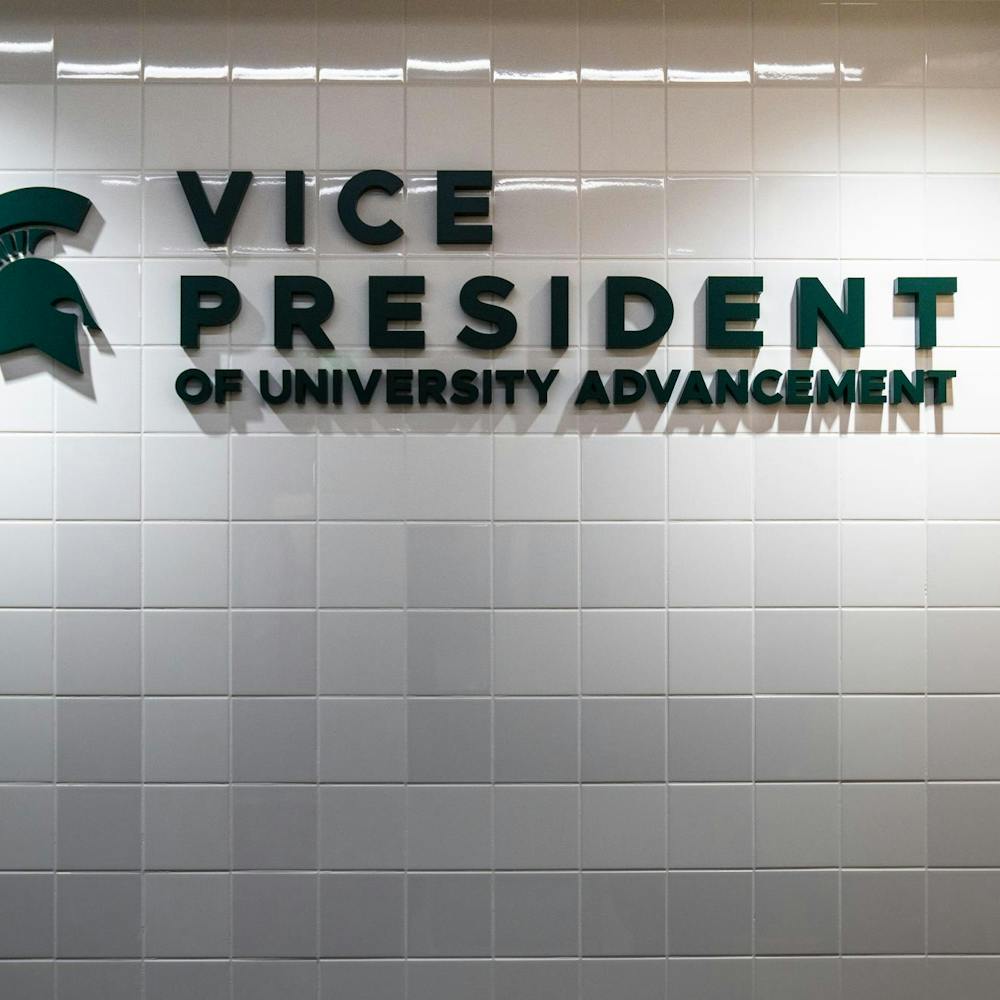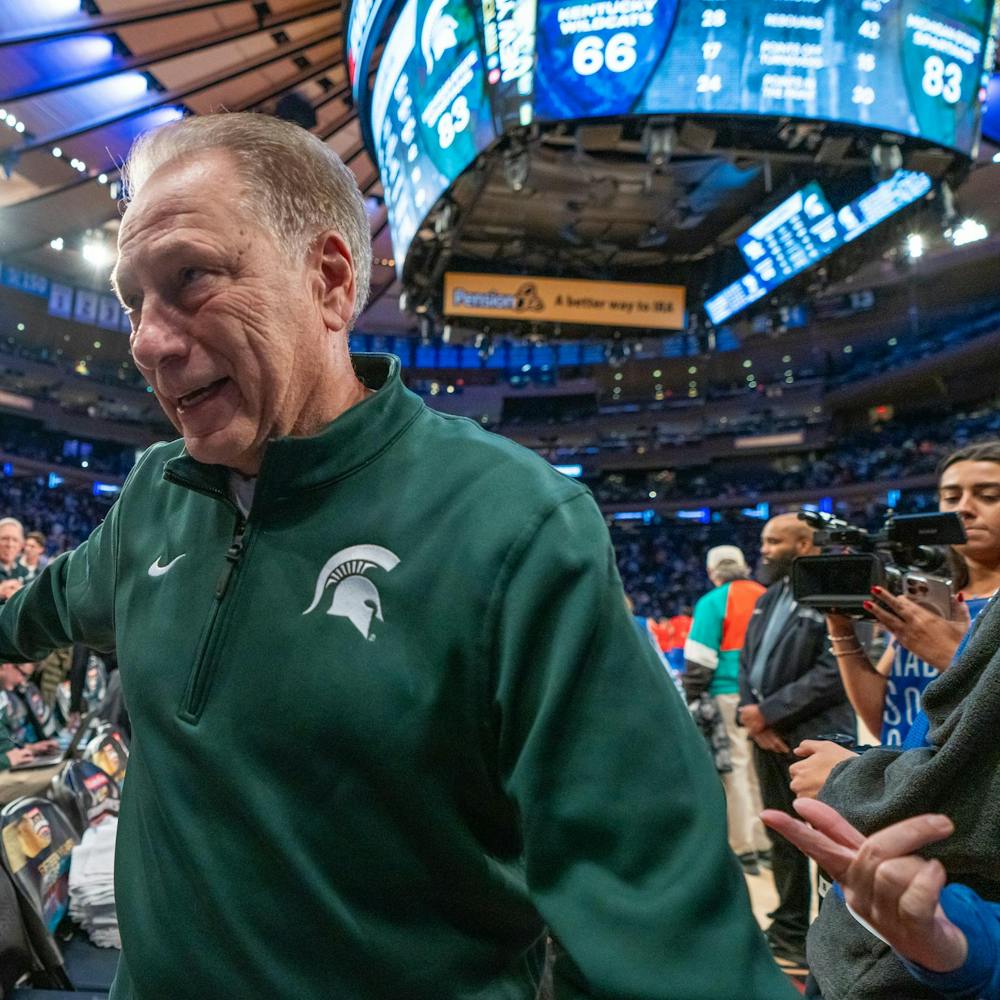What started as an in-class project for ECE 320 has transformed into a $80,000 NASA-funded grant project for a team of eleven undergraduate students.
The MSU Aerial Intra-City Delivery Electric Drone, or AIDED, is dedicated to creating a delivery drone equipped to carry 20 pounds with an extended delivery range through landing on public transportation. On top of extending its range, the use of public transportation is quieter and safer for city deliveries.
Project manager and electrical engineering senior Gavin Gardner said the project began as a class assignment under engineering professor Matt Lee. The idea was submitted to a NASA grant competition and won the full grant in spring 2021.
At this stage in the project, NASA serves as a mentor for the team, Gavin said. They are able to reach out for advice when they need it.
Meet the team
The group is split into three teams: the drone team, the latching and charging team and the software team. The drone team focuses on building and flying the physical drone using computer-aided design. mechanical lead and mechanical engineering senior Ross Davis said.
Mechanical engineering senior Ross Davis is the mechanical lead on the drone team with electrical engineering sophomore Gryson Gardner and mechanical engineering junior Tate Virkus. Gryson said his focus is on ensuring the many components of the drone work together, while Virkus has focused on designing the system that carries and drops loads.
“Mostly I work on the system as a whole and just making sure that the thing is compact and reliable to fly,” Gryson said.
The latching and charging team’s goal is to perfect the connection between the drone and the bus it lands on. For team lead and electrical engineering senior Malachi Keener, this means working on signaling and communication between the latching device and the drone.
The latching device is a cone-shaped piece attached to the top of the bus. It releases an infrared light that a camera on the drone detects.
Electrical engineering senior Ahmed Shoble and mechanical engineering senior Jacob Demski work with Keener on latching and charging. Shoble focuses specifically on keeping the drone’s battery properly charged.
“I had to make sure that when the drone actually landed on the bus … the drone battery is not powering the drone, the bus battery is,” Shoble said.
Demski, who has only worked with the team for one semester, focuses on securing the latching system to the bus.
The software team works on connecting programs to the drone to tell it where to go, software lead and computational and data science junior Brady Berg said. He said the program uses live data from the buses GPS to calculate the correct route.
“What we work with is giving the drone the ability to decide how it goes about riding the buses and delivering the packages,” Berg said. “We found that it's really a lot similar to how people use the transit system, just like with Google Maps.”
Computer science seniors Nicholas Ly and Adam Anderson work on the software team to optimize the algorithm that sends, controls and manages all possible missions for the drone to fly. Ly and Anderson have also created the team’s website.
The football drop
AIDED put 35-lbs drone HERMES to the test at the Michigan State football game against Rutgers on Nov. 12. The drone delivered the game ball to the field, which was filmed and played on the jumbotron during the first timeout.
Berg said the idea started mostly as a joke with engineering dean Leo Kempel at the Detroit Auto Show.
“He was there checking out our drones, and while we were talking, I suggested, mostly as a joke, if we delivered the game ball, and he loved the idea and jumped into it, getting people involved right away,” Berg said.
Support student media!
Please consider donating to The State News and help fund the future of journalism.
After meeting with Kempel, the team met with athletic director Alan Haller to put the plan into motion. The original goal was to fly in person at the beginning of the game, but because of the risk, they chose to do a video instead.
“We were expecting everyone to be like, ‘No, this is a really bad idea, we’re worried about this,’ but they were all interested,” Davis said.
Berg said the project was a great way to show collaboration between two different areas of the university and motivated the team toward its end goal.
Leaving a legacy
With a team of almost exclusively seniors, one of AIDED’s major goals is figuring out who the drones will be left to after graduation in May 2023. Gavin said spring semester will partially be spent training younger engineers on the capabilities of the drones.
“Our goal is to hopefully make Michigan State one of the leaders in drone development,” Gavin said. “Transitioning a lot of our knowledge that we've built over the years, so it just doesn't go away, so we keep that tradition going.”
For Gavin, the freedom the team is given is an incredible opportunity, especially as an undergraduate student.
“It's not too often that undergraduates can get this opportunity, especially since this is fully undergraduate-led,” Gavin said. “We're not taking it for granted, we're using this to the fullest advantage.”
Anderson said working with AIDED has been a great experience to learn how to work with other people at his knowledge level.
“When you're presented with a problem, and you don't really know how to solve it, you kind of just look at each other and come up with an idea and see if it works,” Anderson said. “And if it doesn't, you try the next one. That's a really cool thing.”
For Davis, the opportunity to work on this project is unique because of the potential of the industry.
“We're working on infrastructure and this idea that you could actually one day see this,” Davis said. “We're almost pioneering something new. We're asking each other questions maybe nobody's asked before.”
Discussion
Share and discuss “Funded by NASA: students create bus-riding delivery drones” on social media.







